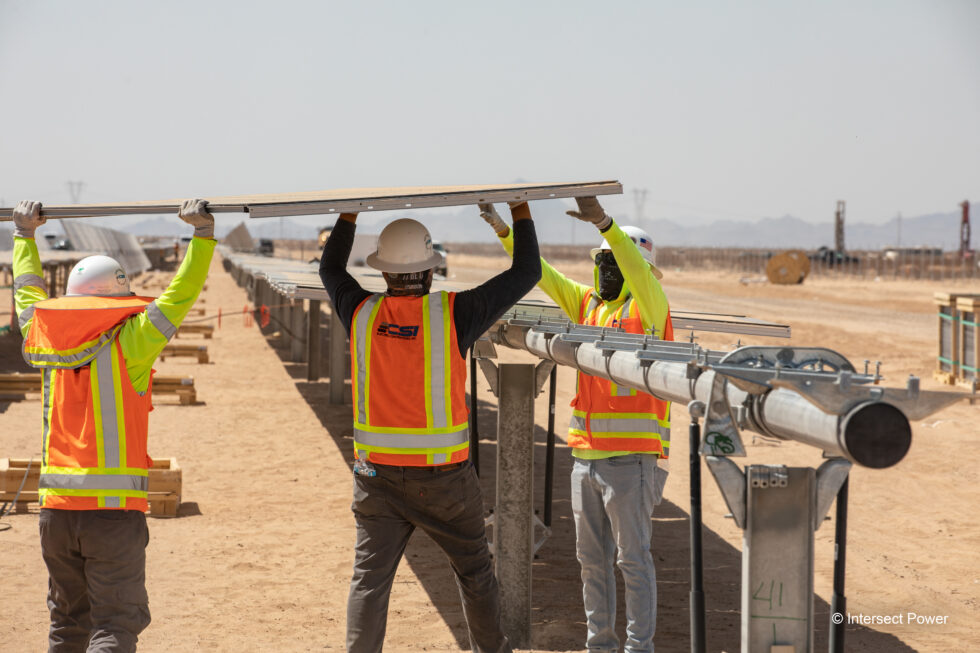The sustainability economy is largely specialized, with most companies adopting a certain area of expertise, whether it’s renewable energy, carbon capture, sustainable buildings, sustainable transportation, waste management, or something else. But that’s beginning to change as more companies adopt a vertically integrated business model where they branch out into several different areas of sustainability.
One of those companies is Intersect Power, a San Francisco-based clean energy company that provides low-carbon electricity, fuels, and related products to customers across North America.
Intersect develops some of the biggest solar and battery-storage facilities in the United States, which generate clean power for clients such as Apple and Morgan Stanley.
The six-year-old company aims to expand into green hydrogen produced from renewable electricity and wind energy. Longer term, it plans to move into businesses such as capturing carbon directly from the air.
To help finance its growth plans, Intersect recently raised $750 million in an investment round led by TPG Rise Climate and included participation from existing investors Climate Adaptive Infrastructure and Trilantic Energy Partners North America.
The round, announced on June 28, brought Intersect’s total financing to about $2.7 billion in debt, construction, and project financing; $900 million in equity; and $400 million in equity linked to tax credits, the Wall Street Journal reported.
In a statement, Intersect CEO Sheldon Kimber said the new financing would help fuel his company’s aim to accelerate decarbonization, build energy security, and deploy the billions of dollars of hard assets needed to solve the climate crisis.
“The bridge between vision and progress is achieved by the continued buildout of clean energy solutions, and our team is energized, now more than ever, to tackle climate change with gigawatts of real assets in the ground,” Kimber said.
A large amount of money involved also represents an acknowledgment that physical infrastructure companies like Intersect can also deliver financial growth, Kimber told Reuters in an interview.
“You know, $750 million is a lot of money,” he said. “But when you look at the scope and scale of our ambition, it’s an appropriate amount of money.”
As the Wall Street Journal reported, Intersect aims to be more profitable than its competitors by signing shorter power contracts and offering more flexibility. This strategy allows it to benefit from a better risk and return profile created by rising global energy and clean commodities prices.
Another competitive advantage Intersect has is that it gets most of its solar panels domestically from manufacturers such as First Solar, which means it has less exposure to global supply-chain logjams. The company expects to complete several solar and battery-storage projects by next year.
Intersect’s assets are an 8.5+ gigawatts peak (GWp) and 8+ gigawatts hour (GWh) mid- to-late-stage pipeline with a base portfolio of 2.2 GWp of solar PV and 1.4 GWh of co-located storage that will be in operation by 2023. The company is also planning nearly 1 GW of green hydrogen production.
That kind of scale is one of the reasons investors are drawn to the company.
“Intersect’s proven delivery of large, scalable clean energy projects and differentiated business model positions the company to lead the way into new markets and clean energy products as our economy continues to decarbonize,” Ed Beckley, a partner at TPG and senior member of its climate investing team, said in a press release.





